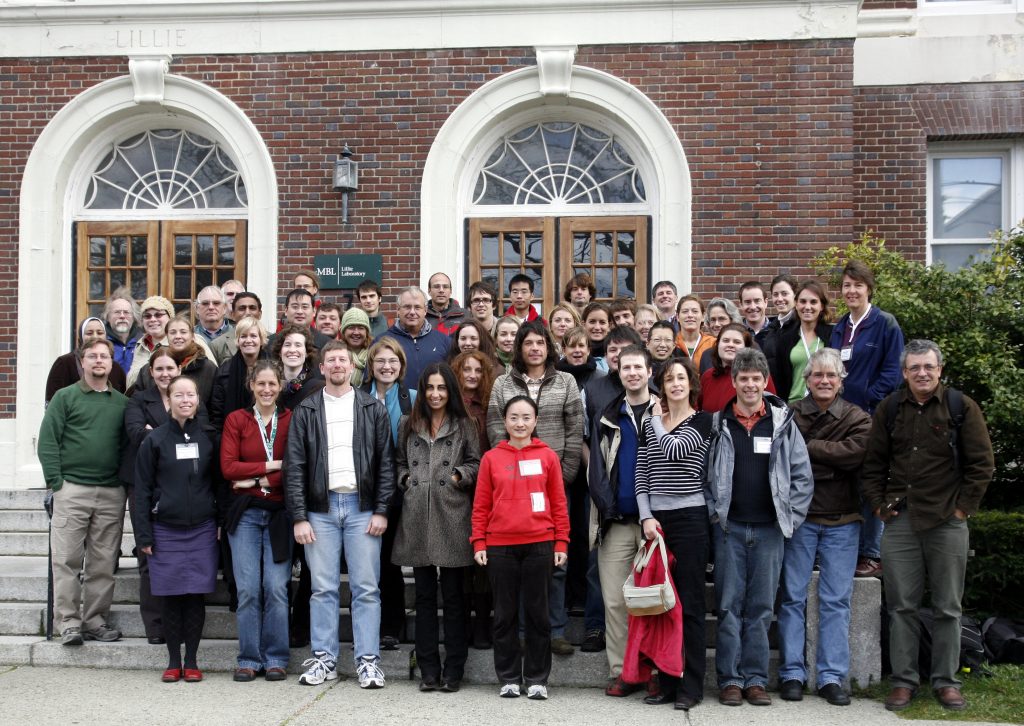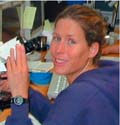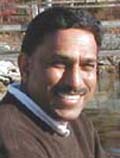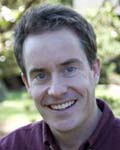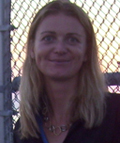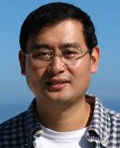On This Page:
Overview
THANK YOU!
The Ocean Carbon & Biogeochemistry Program would like to thank all instructors, TAs, students, and WHOI and MBL staff for a successful and enjoyable course! We also extend our sincere thanks to the OCB Project Office sponsors NSF, NASA, and NOAA, as well as the European Project on Ocean Acidification (EPOCA).
OCB OCEAN ACIDIFICATION SHORT COURSE ? NOVEMBER 2-13, 2009
The Ocean Carbon & Biogeochemistry (OCB) Project Office (funded by NSF, NASA, and NOAA) with co-sponsorship from the European Project on Ocean Acidification (EPOCA) coordinated and hosted a hands-on ocean acidification short course from November 2-13, 2009 at the Woods Hole Oceanographic Institution and the Marine Biological Laboratory in Woods Hole, MA. With representation from 14 countries, the course convened 20 instructors and 35 participants (postdoctoral and faculty level) from multiple sub-disciplines of biological and chemical oceanography. Building upon recommendations from the recent Ocean Acidification Best Practices Workshop in Kiel, Germany, instructors educated participants on appropriate chemical and biological techniques and protocols related to ocean acidification research using a combination of lectures and hands-on laboratory experiences. The first segment of the course focused on water sampling and measurement techniques for inorganic carbon parameters in seawater. Instructors also provided demonstrations of software packages used to calculate CO2 system parameters (CO2SYS, seacarb). The second segment focused on key aspects of ocean acidification experimental design, such as manipulation of seawater chemistry, biological perturbation approaches, and lab- and field-based methods for measuring organism calcification and other physiological responses to seawater chemistry changes. The third segment included lectures and hands-on work with biogeochemical modeling and use of large global data sets in ocean acidification research. In the final segment, participants learned about ocean acidification data reporting requirements and metadata guidelines and gained hands-on experience with the Ocean Data View (ODV) software.
The Course Materials section includes a full course syllabus, background materials, lecture files, and video footage of all course lectures. For more information on who participated in the course, please visit the Participants page. Please check back often, as we will be populating this page with photos and brief bios of the participants and instructors.
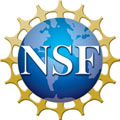
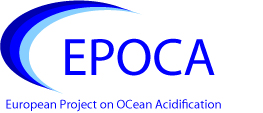
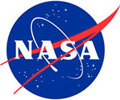
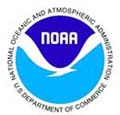
Related Links
Course Materials
Video Footage of Course Lectures
Click on the right for accompanying lectures (in pdf format) and other reference material from the course. The video files are being processed and will be posted as they become available.
MONDAY NOVEMBER 2
- Overview of the ocean CO2 system (Sabine)
- Introduction to CO2 chemistry in seawater media, analytical parameters, and current measurement techniques (Dickson)
- Introduction to CO2SYS (Sabine)
- Introduction to seacarb (Gattuso)
- CO2 water sampling movie (Dickson)
- Introduction to underway pCO2 system (Wang)
TUESDAY NOVEMBER 3
- pH and Alkalinity (Dickson)
- Overview of biogeochemical feedbacks (Hutchins)
WEDNESDAY NOVEMBER 4
- Quality control of analytical measurements of CO2 parameters (Dickson)
- Advantages and disadvantages of current analytical approaches? How well can you control the CO2 system in your experiment? (Wang)
- Implications of uncertainties in equilibrium constants and analytical measurements (Dickson)
- Choosing the optimal parameters for a particular ocean acidification experiment and learning how well you need to measure the parameters you choose (Sabine)
- Overview on experimental design (Langdon)
THURSDAY NOVEMBER 5
- Approaches and tools to manipulate carbonate chemistry (Gattuso)
- Moored CO2 instrument demonstration (Sabine)
FRIDAY NOVEMBER 6
- Algal culturing overview (Iglesias-Rodriguez)
- Calcification in a high-CO2 world (Cohen)
- Measuring calcification in biological experiments - Mollusks (Miller)
SATURDAY NOVEMBER 7
- Radioisotope techniques for measuring coccolithophore calcification (Balch)
- PIC methods for quantifying calcification (Iglesias-Rodriguez)
- Measuring calcification in the field (Langdon)
MONDAY NOVEMBER 9
- Ocean Data View (Schlitzer)
TUESDAY NOVEMBER 10
- Biogeochemical modeling (Doney)
- Physiology (Seibel)
WEDNESDAY NOVEMBER 11
- Large-scale data products for open ocean biogeochemistry - Part 1 (Doney/Key)
- Large-scale data products for open ocean biogeochemistry - Part 2 (Doney/Key)
- Genomics applications to ocean acidification research - Part 1 (Fangue)
- Genomics applications to ocean acidification research - Part 2 (Fangue)
THURSDAY NOVEMBER 12
- Introduction to Data Management and Better Practices for Shipboard Data Management (Chandler)
- Biogeochemical Modeling Part II (Doney)
- Experimental synthesis and discussion (Langdon)
FRIDAY NOVEMBER 13
- CDIAC and Data Reporting (Kozyr)
Information on CO2 Instrumentation
International Ocean Carbon Coordination Project (IOCCP) website (click on Sensors in lefthand menu) - includes instrumentation information for measuring dissolved inorganic carbon (DIC), pH, total alkalinity, pCO2, and particulate carbon
REQUIRED SOFTWARE
CO2SYS (Sabine)
CO2SYS_calc_XLS: Pierrot, D. E. Lewis,and D. W. R. Wallace. 2006. MS Excel Program Developed for CO2 System Calculations. ORNL/CDIAC-105a. Carbon Dioxide Information Analysis Center, Oak Ridge National Laboratory, U.S. Department of Energy, Oak Ridge, Tennessee.
SEACARB (Gattuso)
The software package seacarb will be used during the course. All participants are invited to download and install, before the course starts, the following software on their laptop:
1) The version of the R program suitable with the OS installed on your laptop. Versions for Mac OSX, linux, unix and Windows are available here.
2) The R package seacarb. To do that, launch R, go to "Packages & Data:Packages installer", click on "Get list", look for seacarb and click "Install selected".
BIOGEOCHEMICAL MODELING
MIT/WHOI Modeling Course (Doney)
Carbon Dioxide Information Analysis Center (CDIAC) (Key)
What We Know About Climate Change (Boston Review Books) by Kerry Emanuel, Judith
A. Layzer, and William R. Moomaw (Hardcover - Sep 30, 2007), The MIT Press, 96 pp.,
Language: English, ISBN-10: 0262050897, ISBN-13: 978-0262050890.
Easterling, D. R., and M. F. Wehner (2009), Is the climate warming or cooling?, Geophys. Res. Lett., 36, L08706, http://www.agu.org/journals/gl/gl0908/2009GL037810/doi:10.1029/2009GL037810.
November 11 Biogeochemical Modeling Demonstration (Doney): Matlab Scripts (download matlab files to the right)
OCEAN DATA VIEW (Schlitzer)
Download ODV 4.2.0. Choose the version for your computer (Windows, Mac OS X or Linux) and follow the installation instructions. People need to register to get access.
Download the CARINA data and follow installation instructions.
Download the GLODAP data and follow installation instructions.
Participants new to ODV are strongly encouraged to try running ODV on the CARINA and GLODAP datasets before they come to the course. The getting started document and the ODV User's Guide should help you get acquainted with the software. Context-sensitive help is available from inside ODV. Participants are also strongly encouraged to bring their own data. Practicing the import of new data into ODV will be part of the course.
DATA MANAGEMENT AND REPORTING (Chandler/Kozyr)
Important Data Management Links (Chandler)
- NSF Division of Ocean Sciences Data and Sample Policy. National Science Foundation. NSF 04-004
- Biological and Chemical Oceanography Data Management Office (BCO-DMO) Home Page
- BCO-DMO Data Management Guidelines Manual (available from the BCO-DMO Resources page)
- Anne-Marin Nisumaa (Villefranche-sur-mer, France) - Data rescue presentation: "EPOCA/EUR-OCEANS data rescue and transformation on ocean acidification" - download pdf (see list of files to the right)
Important Data Reporting Links (Kozyr)
CDIAC Global Ocean CO2 Database Components
- WOCE Database
- GLODAP Database
- CLIVAR Repeat Hydrography and Carbon Database
- VOS Underway pCO2 Database
- Moorings and Time Series Database
- Global Coastal Program Data
- CARINA Database
- Global Surface Ocean Alkalinity Climatology Database (K. Lee)
- LDEO (Takahashi) Global Surface pCO2 Database
IMPORTANT BACKGROUND MATERIALS: SEGMENTS 1 & 2
Riebesell, U., Fabry, V. J., Gattuso, J-P (Eds.) (In Preparation). Guide to Best Practices in Ocean Acidification Research and Data Reporting.
Dickson, A.G., Sabine, C.L. and Christian, J.R. (Eds.) 2007. Guide to best practices for ocean CO2 measurements. PICES Special Publication 3, 191 pp.
Related Files
- UNABRIDGED COURSE SYLLABUS (505 PAGES, 17-18 MB)
- At-A-Glance Course Schedule
- Detailed Course Schedule
- OA Short Course Participant Learning Outcomes
- Chris Sabine: Overview of the Ocean CO2 System
- Andrew Dickson: Introduction to CO2 Chemistry in Seawater Media
- Aleck Wang: Introduction to Underway pCO2 System
- Short reference card for R
- seacarb training
- seacarb test data
- Andrew Dickson: pH and Alkalinity
- Dave Hutchins: Overview of Biogeochemical Feedbacks
- IRGA DIC Results
- Coulometric DIC movie
- Andrew Dickson: Quality Control of Analytical Measurements of CO2 Parameters
- Andrew Dickson: Implications of Uncertainties in Equilibrium Constants and Analytical Measurements
- Chris Sabine: Choosing the Optimal Parameters for a Particular Ocean Acidification Experiment and Learning How Well You Need to Measure the Parameters You Choose
- Chris Langdon: Overview of Experimental Design
- Jeanne-Pierre Gattuso: Approaches, Tools to Manipulate Carbonate Chemistry
- Shi et al. (2009)
Shi, D., Xu, Y., and Morel, F. M. M. (2009). Effects of the pH/pCO2 control method on medium chemistry and phytoplankton growth, Biogeosciences 6: 1199-1207. - Kim Yates: Hands-on CO2SYS exercise
- Sabine/Dickson: Summary of discussion on optimal CO2 parameters
- Debora Iglesias-Rodriguez: Algal Culturing Overview
- de Beer et al. (2000)
de Beer D., Kühl M., Stambler N., Vaki L. (2000) A microsensor study of light enhanced Ca2+ uptake and photosynthesis in the reef-building hermatypic coral Favia sp. Marine Ecology Progress Series 194, 75–85. - Al-Horani et al. (2003)
Al-Horani, F.A., Al-Moghrabi, S.M., de Beer, D. (2003). The mechanism of calcification and its relation to photosynthesis and respiration in the scleractinian coral Galaxea fascicularis. Marine Biology 142: 419-426. - Al-Horani et al. (2007)
Al-Horani, F.A., Tambutté, É., Allemand, D. (2007). Dark calcification and the daily rhythm of calcification in the scleractinian coral, Galaxea fascicularis. Coral Reefs 26: 531–538. - de Nooijer et al. (2009)
de Nooijer L.J., Takashi Toyofuku T., Kitazato H. (2009). Foraminifera promote calcification by elevating their intracellular pH. PNAS 106: www.pnas.org/cgi/doi/10.1073/pnas.0904306106. - Whitman Miller: Measuring Calcification in Biological Experiments - Mollusks
- William Balch: Radioisotope Techniques for measuring coccolithophore calcification
- Debora Iglesias-Rodriguez: DIR-PIC measurements for estimating calcification
- Andersson et al. (2008)
Andersson, A.J., Mackenzie, F.T., Bates, N.T. (2008). Life on the margin: implications of ocean acidification on Mg-calcite, high latitude and cold-water marine calcifiers. Marine Ecology Progress Series 373: 265-273. - Morse et al. (2006)
Morse, J.W., Andersson, A.J., Mackenzie, F.T. (2006). Initial responses of carbonate-rich shelf sediments to rising atmospheric pCO2 and “ocean acidification”: Role of high Mg-calcites. Geochimica et Cosmochimica Acta 70: 5814-5830. - Chris Langdon: Measuring calcification in the field
- Reiner Schlitzer: Ocean Data View
- Scott Doney: Biogeochemical Modelling Introduction
- Brad Seibel: Physiology
- Seibel et al. (In Press) critique of Brewer & Peltzer respiration index
- Bob Key (given by S. Doney): Large Data Sets
- Data from coral calcification experiment
- Data from larval mollusk experiment
- Cyndy Chandler: Introduction to Data Management
- Cyndy Chandler: Shipboard Practices for Data Management
- Anne-Marin Nisumaa: Data rescue presentation
- Scott Doney: Biogeochemical Modeling Part II
- Michael Holcomb: Experimental Wrap-up
- Chris Langdon: Experimental Wrap-up
- Chris DuFore: Spectrophotometric TA spreadsheet
- Chris DuFore: Spectrophotometric pH spreadsheet
- Alex Kozyr: Data Reporting
- Group Photo: By Mark Carls
- Schuster et al. (2009) dissolved carbon instrumentation paper
- euler_demo.m
- dicbio.m
- equic.m
- pco2_dicalk.m
- dicbio_main.m
- OA course TA and pCO2 equilibrator comparisons
Participants
Brief Biographies of Instructors and Participants
This page under construction
Related Files
Heather Benway, Woods Hole Oceanographic Institution, U.S.A.
Heather received her Ph.D. in oceanography from Oregon State University in 2005, and has research interests in paleoceanography, sedimentology, and isotope geochemistry. Heather is especially interested in the tropical-high latitude feedbacks that drive abrupt climate and deep ocean circulation changes. Her dissertation focused on the application of stable isotope tracers, box models, and tropical paleoceanography to study the transport of water vapor across the Panama Isthmus. Heather did postdoctoral research in North Atlantic paleoceanography at WHOI and then joined the OCB Project Office in May 2007, where she designs and implements community building activities to further carbon cycle science research.
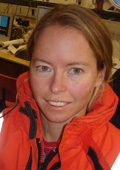
Helen Bostock, National Institute of Water and Atmospheric Research, Wellington, New Zealand
Helen is a marine geologist, primarily interested in paleoceanography and carbonate mineralogy/chemistry. She did her MSci at University of Cambridge on carbonate mineralogy and the diagenesis of limestones and then her PhD at the Australian National University on the southern Great Barrier Reef using geochemical tracers to understand past and present ocean circulation in the Tasman Sea. She has been working at NIWA for the last 3 years looking at sediment cores and carbonate water chemistry from the Macquarie Ridge, Southern Ocean and the distribution of carbonate sediments and deepsea organisms in the southwest Pacific Ocean.
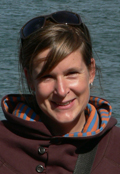
Daniela Bottjer, University of Hawaii, U.S.A.
Daniela received her Ph.D. from the University of Bremen in 2007. Her dissertation focused on trophic interactions in the microbial food web in a coastal upwelling system off central Chile. From 2008-2009 she was a post-doctoral scientist at the Laboratory of Biological Oceanography of Banyuls-sur-Mer where she was involved in a research project about climate and human induced alterations in carbon cycling at the Rhône River - Mediterranean Sea interface. Now she is a post-doctoral investigator at the University of Hawaii at the Centre for Microbial Oceanography (C-MORE) in Matt Church's lab where she works on oceanic diazotroph community structure and activities in a high carbon dioxide world.
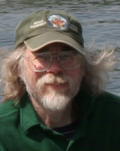
Mark Carls, NOAA/NMFS/Alaska Fisheries Science Center, U.S.A.
Mark currently manages and actively participates in oil-related research projects in Alaska and is developing ocean acidification research at the Auke Bay Laboratories. He has been a principal investigator for numerous research projects involving oil spills and associated research; these include fish embryo toxicity, long-term availability of oil to biota, development of passive hydrocarbon samplers, sediment contamination, impaired salmon habitat, and interpretation and modeling of hydrocarbon chemistry. Oil byproducts are common environmental contaminants resultant from societal reliance on fossil fuels for energy; ocean acidification research involves a rather different aspect of the same problem.
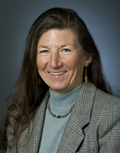
Cyndy Chandler, Woods Hole Oceanographic Institution, U.S.A.
Cyndy Chandler is co-manager of the Biological and Chemical Oceanography Data Management Office (BCO-DMO) and an Information Systems Associate in the Marine Chemistry and Geochemistry Department at the Woods Hole Oceanographic Institution (WHOI) in Woods Hole, Massachusetts. During her 30 years at WHOI she has participated in 35 research cruises and is one of the three originating PIs for the Rolling Deck to Repository project funded by NSF to ensure proper stewardship of data collected aboard vessels in the US academic fleet. Her current research interests focus on the field of ocean informatics.
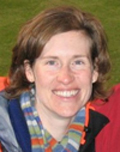
Sarah Cooley, Woods Hole Oceanographic Institution, U.S.A.
Sarah Cooley received her Ph.D. in 2006 from the University of Georgia, where her dissertation focused on inorganic carbon chemistry in the offshore Amazon River plume. Now she is a postdoctoral investigator at the Woods Hole Oceanographic Institution in the Doney lab. Her research interests include analytical and computational inorganic carbon chemistry, ocean acidification forecasts from coupled climate models, socioeconomic implications of ocean acidification, and communicating science to nonscientists. She also works with the OCB project office and the OCB ocean acidification subcommittee to generate teaching and outreach materials about ocean acidification.
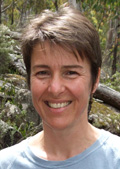
Katharina Fabricius, Australian Institute of Marine Science, Australia
Katharina Fabricius is a coral reef ecologist who has worked on coral reefs of the Great Barrier Reef and many other regions around the world since 1988. She received her PhD from the University of Munich in 1995 for her work on the Great Barrier Reef and Red Sea, and is now a Principal Research Scientist at the Australian Institute of Marine Science (AIMS). Her research focuses on the question how large-scale disturbances from terrestrial runoff, climate change and ocean acidification affect the resilience and ecological functions of coral reefs.
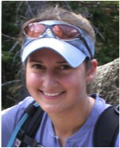
Nann Fangue, University of California, Davis, U.S.A.
Nann Fangue received her Ph.D. in Animal Physiology from the University of British Columbia in 2007 with Dr. Patricia M. Schulte. From 2007-2009, she was a post doc at the University of California, Santa Barbara with Dr. Gretchen Hofmann. Dr. Fangue is currently an Assistant Professor in the Wildlife, Fish, and Conservation Department at the University of California, Davis where her research focuses on understanding the physiological specializations that allow animals to inhabit complex and challenging environments. She is currently using sea urchins and fishes as models to address whether aquatic organisms have sufficient physiological capacity or plasticity to maintain successful performance in the face of anthropogenic environmental perturbations such as ocean acidification. By coupling molecular, cellular, and whole-organism measures of organismal performance framed in an ecological context, her research elucidates connections between environment, physiology, and ecosystem function.
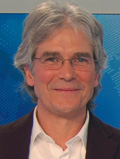
Jeanne-Pierre Gattuso, CNRS and Université Pierre et Marie Curie-Paris, France
Jean-Pierre Gattuso received his Ph.D. from the University of Marseilles in 1987. He was a post-doctoral scientist at the Australian Institute of Marine Science for 2 years and is a CNRS scientist since 1990. His main research activity presently relates to ocean acidification. He is the Scientific Coordinator of the FP7 large-scale integrated project EPOCA (European Project on Ocean Acidification).
Joaquim Goes, Bigelow Laboratory for Ocean Sciences, U.S.A.
Joaquim Goes received his D.Sc. in 1992 from Nagoya University, where his research focused on the effects of ultraviolet radiation on the carbon assimilation pathways in marine phytoplankton using stable isotope tracers and mass spectrometry. He is presently a Senior Research Scientist at Bigelow Laboratory for Ocean Sciences, Boothbay Harbor, Maine, USA, where he is involved in projects related to climate change, ocean color remote sensing, ocean ecosystems and marine biogeochemical cycles.
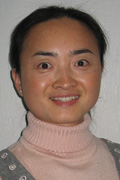
Xiang-Hui Guo, Xiamen University, China
Xianghui Guo received her Ph.D. in Chemical Oceanography from Xiamen University in 2009. Her Ph. D. focused on a comparison of the carbonate system between the Pearl River estuary (China) and the Mississippi River plume (USA). Now she is working at the State Key Laboratory of Marine Environmental Science. She will take a postdoctoral position at the Research Center for Environmental Changes, Academia Sinica in Taiwan in 2010-2013, where she will work on the response of the coral reef system to ocean acidification. Her general interest is the biogeochemical cycling of carbon and nutrients, including CO2 gas exchange, carbon and nutrient dynamics, and biogeochemical process study through in situ sensors. Her current research seeks to reveal the influence of eddies on the carbon cycle in the South China Sea.
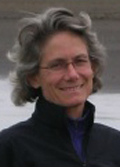
Terrie Klinger, University of Washington, U.S.A.
Terrie Klinger is Associate Professor of Marine Affairs at the University of Washington, Adjunct Associate Professor in the School of Aquatic and Fisheries Sciences, and a leader of the Center for Ecology of Changing Oceans at UW’s Friday Harbor Laboratories. She serves as Governor’s Appointee to the Northwest Straits Commission, Chair of the Olympic Coast National Marine Sanctuary Advisory Council, and Science Advisor to COMPASS. She earned a Ph.D. in Biological Oceanography from the Scripps Institution of Oceanography. Her research focuses on the ecology of nearshore benthic communities, with a special emphasis on the impacts of multiple stressors on marine ecosystem function and on the development of management strategies to reduce such impacts.
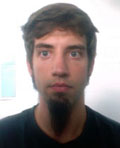
Anderson Mayfield, National Museum of Marine Biology and Aquarium, Checheng, Taiwan and Marine Science Institute, University of California, Santa Barbara, U.S.A.
Anderson Mayfield received his Ph.D. in Zoology in 2009 from the University of Hawaii, Manoa, having conducted the majority of his dissertation work at the Hawaii Institute of Marine Biology on Coconut Island within Kaneohe Bay. Working with Dr. Ruth Gates, Anderson helped to develop molecular methods for understanding the physiology of reef-building corals, the organisms responsible for constructing the beautiful coral reefs found across Earth's tropical seas. As a physiologist, Anderson is interested in understanding the physiological implications of changing environments on the cellular behavior of corals, particularly with respect to subcellular means of physiological regulation via gene and protein expression. As a National Science Foundation international research fellow, Anderson will spend the majority of his post-doctoral research fellowship in the laboratory of Prof. Chii-Shiarng Chen at Taiwan's National Museum of Marine Biology and Aquarium, returning to the United States in 2011 to conduct global transcriptome studies of corals and sea urchins with Prof. Gretchen Hofmann at the University of California, Santa Barbara.
Michael O'Donnell, University of Washington, U.S.A.
Michael O’Donnell is currently a postdoctoral fellow at University of Washington’s Friday Harbor Laboratories. Moose received his PhD in biomechanics from Stanford University. He subsequently did postdoctoral work in physiological ecology at the University of California, Santa Barbara. His primary research interests center around understanding the mechanisms by which environmental conditions structure ecological interactions between organisms.
Daniela Turk, National Institute of Biology, Slovenia
Daniela received her Ph.D. from Dalhousie University, and continued her research as a post-doctoral fellow at PMEL/NOAA. Subsequently, she held positions of science officer at the CLIVAR IPO, executive director of the Canadian SOLAS and program manager at the European Science Foundation. She is presently a Marie Curie Research Fellow at the Marine Biology Station, National Institute of Biology, Slovenia where she is involved in coastal carbon cycling and ocean acidification research in the Northern Adriatic.
Zhaohui 'Aleck' Wang, Woods Hole Oceanographic Institution, U.S.A.
Zhaohui 'Aleck' Wang is an Assistant Scientist in the Marine Chemistry & Geochemistry Dept. at Woods Hole Oceanographic Institution. He received his M.Sc. in1998 in Chemical Oceanography at the University of New Hampshire and his Ph.D. in 2003 in Marine Science at the University of Georgia. His research interests include: carbonate chemistry; carbon cycling; sensor developments for in-situ measurements of the seawater CO2 system (pH, pCO2/fCO2, total dissolved inorganic carbon, and total alkalinity), nutrients, and trace metals; coastal carbon and nutrient biogeochemistry; chemical oceanography and marine biogeochemistry.
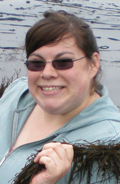
Meredith M. White, Massachusetts Institute of Technology/Woods Hole Oceanographic Institution, U.S.A.
I'm a graduate student in the Massachusetts Institute of Technology/Woods Hole Oceanographic Institution (MIT/WHOI) Joint Program in Biological Oceanography. As an undergraduate, I studied Biochemistry at Lafayette College in Easton, Pennsylvania. My Ph.D. advisor is Lauren Mullineaux of WHOI's Biology Department, a larval ecologist. Also on my committee are Anne Cohen and Dan McCorkle, of WHOI's Geology and Geophysics Department, Ann Tarrant of WHOI's Biology Department, and Ed Boyle of MIT's Earth, Atmosphere, and Planetary Science Department. I am beginning a thesis to understand organismal and population-level effects of CO2-driven ocean acidification on bay scallops, Argopecten irradians. I'm interested in how the highly-vulnerable early life stages of invertebrates are able to survive and adapt to a lower pH ocean. With the scallops, my work will focus on the larval and juvenile stages.

